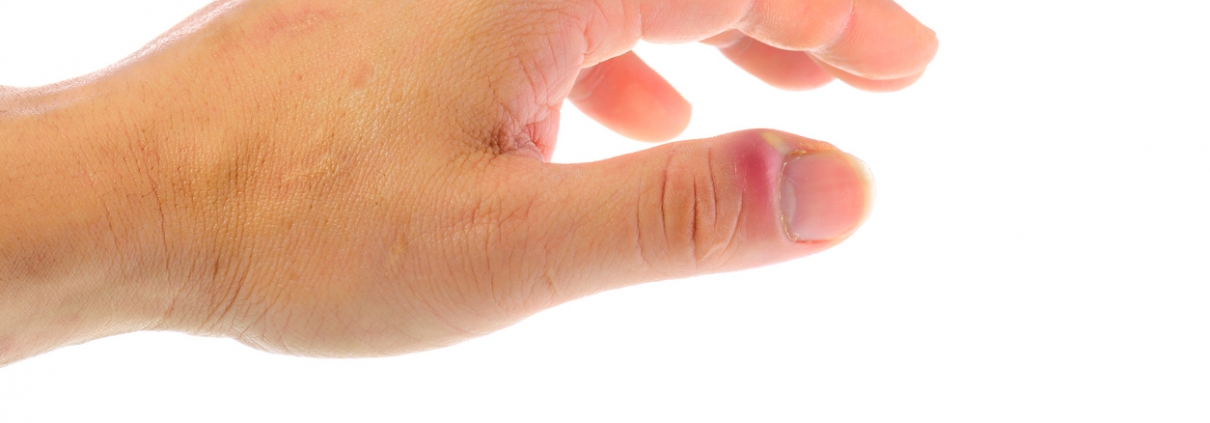Ingrown Fingernails
Although ingrown nails are commonly associated with your toenails, they can also affect your fingernails as well if certain steps are not taken to keep them from happening. When left alone, ingrown fingernails can also lead to a painful infection that may require medical intervention depending on the severity and can make everyday activities such as typing on a keyboard or holding a pen much more difficult than usual.
What is an ingrown fingernail?
You might already know that your nails are made of a material called keratin which forms the shape and keeps everything together. Fingernails are generally good at keeping their shape and growing in the way that they’re supposed to, but sometimes when the shape is altered, it can cause the nail to grow into the sides of the skin surrounding the nail, which is classified as an ingrown nail.
Several things can be the cause of ingrown nails including:
- Injury
- Fungal infections
- Growth rate
- Incorrect nail trimming
- Nail biting
Treatment
Luckily, ingrown fingernails can be treated at home quite easily and very rarely will require medical attention unless you have a special medical condition such as diabetes that would require you to see a doctor. To treat an ingrown fingernail at home, follow these steps:
- Soak the finger in warm water for 10-20 minutes, or apply a warm compress.
- Apply antibacterial cream or a prescribed cream if an infection or fungal bacteria is present
- Cover the area with a sterile bandage
- Repeat this process 2x a day until the ingrown fingernail has healed.
However, if you’re an individual who happens to have a more serious case, your doctor may recommend one of the following treatments in order to fix your nail.
Medicated Cotton Wedge
This procedure can be done either by your doctor, or by yourself if you’re comfortable enough. A small wedge of medicated cotton is inserted under the nail so it acts as a barrier between the nail and the inflamed skin. By lifting up the nail, it can relieve pain also allow the nail to grow back properly.
Abscess Draining
Sometimes ingrown fingernails can turn into an abscess in which case it will need to be drained by a doctor. Using a local anesthesia, your doctor will make a small incision along the abscess so that it can drain. Abscess’ with significant drainage may require a wick to be placed so that it can continue to drain over the next day.
When to See the Doctor
As mentioned above, the majority of ingrown fingernails do not require the care of a doctor and can easily be remidied at home. However, there are few things to watch out for and if you notice any of these signs, come into the doctor straight away for an examination as they may be signs of a serious infection.
- Severe pain that worsens instead of getting better
- Increasing redness
- If your fingertip becomes completely red
- Joint pain/having trouble bending the joint
- A high fever
Remember to take good care of your nails and follow all general care instructions to ensure happy, healthy nails. For dry, brittle nails that are prone to breaking and causing ingrown nails to happen, use Plei Nail Strengthener.





